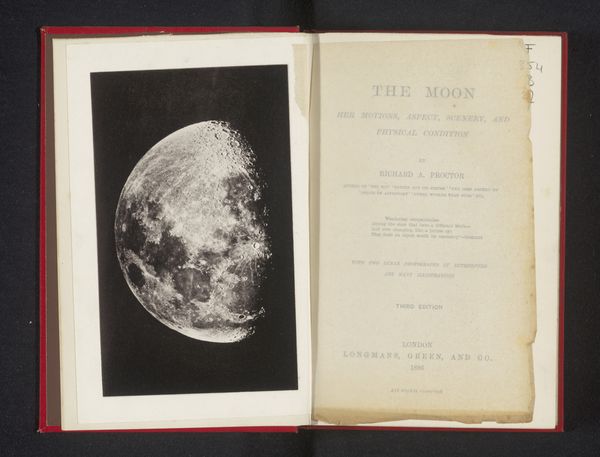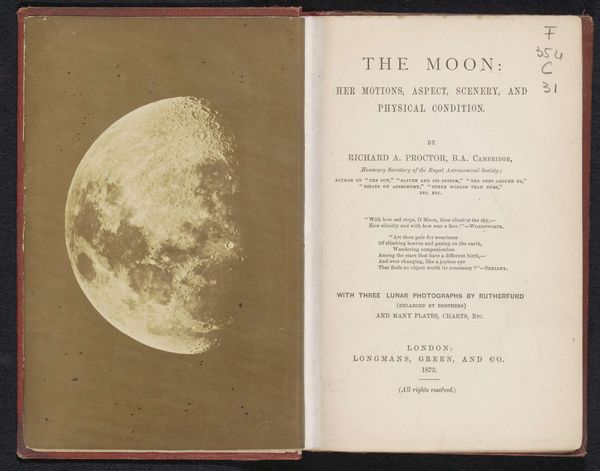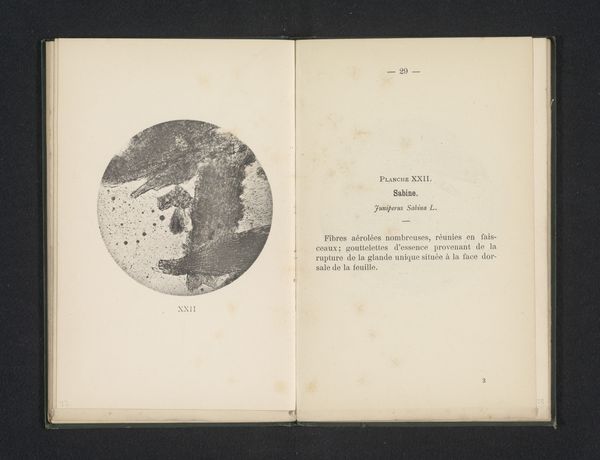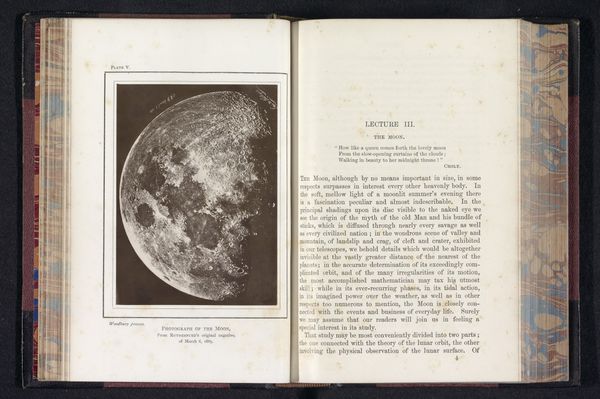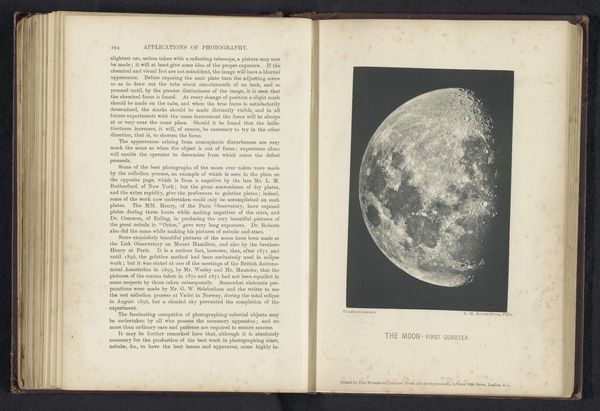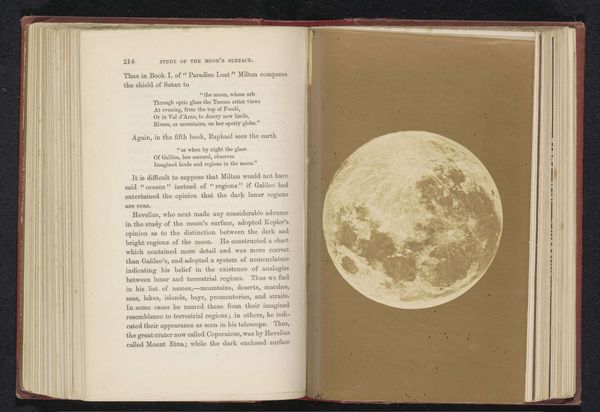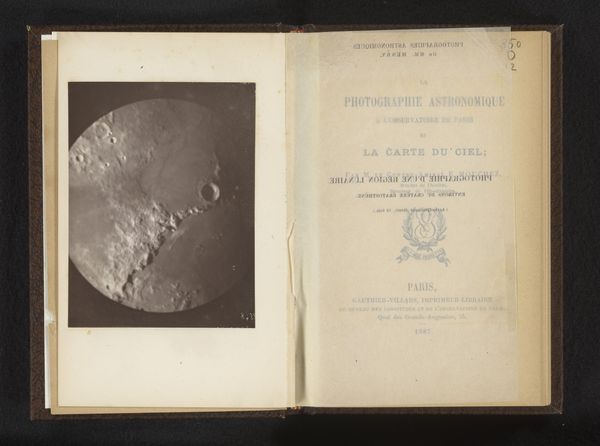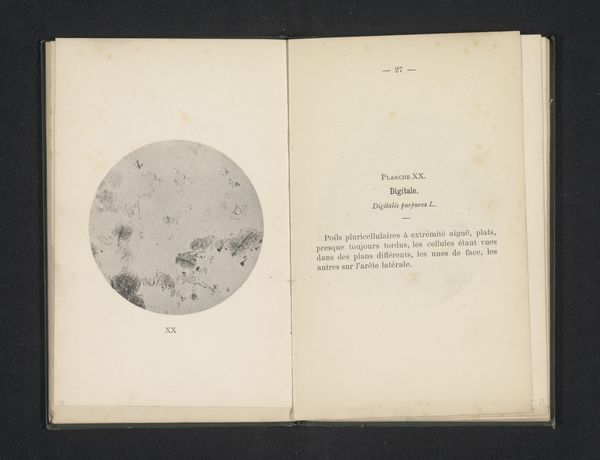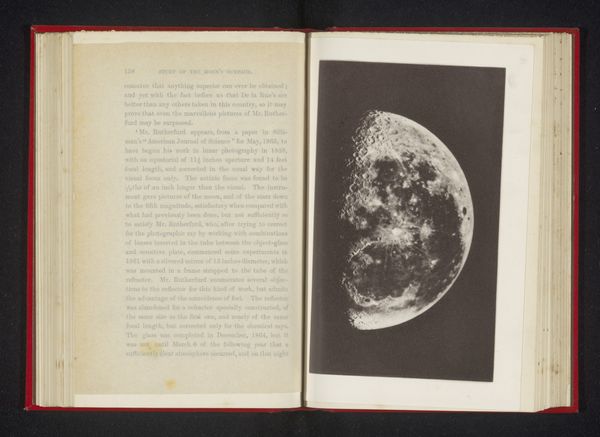
Dimensions: height 287 mm, width 227 mm, thickness 30 mm
Copyright: Rijks Museum: Open Domain
This book, *The Moon: Considered as a Planet, a World, and a Satellite,* was published in London in 1874 by James Nasmyth. Instead of the usual astronomical drawings, Nasmyth created plaster models of the moon’s surface, lit them dramatically, and then photographed them. Think about that process: each crater, mountain, and valley carefully sculpted by hand in plaster, a humble material. He was a trained engineer who brought that sensibility into his art practice. The images themselves seem to come from a different world, while the method used to create them is firmly rooted in the earthly realms of material and labor. There’s also an intriguing element of fakery at play. These aren’t photographs of the moon itself but rather of a model. Nasmyth wanted to make the moon accessible, tangible. He used his skills to bridge the gap between scientific observation and artistic interpretation, all while questioning the boundary between truth and illusion. It serves as a reminder that art, like science, is always a constructed vision.
Comments
No comments
Be the first to comment and join the conversation on the ultimate creative platform.
